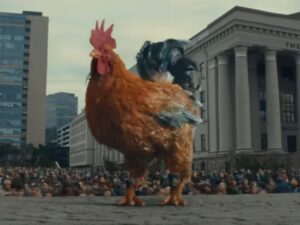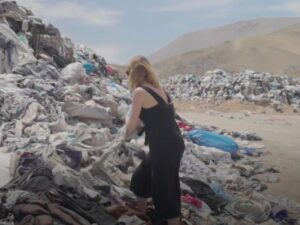The cheetah might not crack the list of Africa’s Big Five, but the world’s fastest land animal remains one of the more sought-after sightings for visitors to our shores.
Not everyone is content just to see one, however, and social media is full of pictures of tourists and locals alike petting the cats.
According to the Conservation Action Trust (CAT), more than 600 cheetah are being kept in captivity in South Africa, and many have raised concerns about the emergence of a worrying trend where “cheetah are bred on demand, taken away from their mothers to be hand-reared for cub petting, to become ambassador species, or to be exported for either “zoological” reasons or into the pet trade”.
CAT points out that many breeders who talk about conservation efforts are really just monetising these animals:
South Africa has a significant number of “ambassador cheetahs”. The majority are bred in captivity and hand-reared to be groomed as well-behaved ambassadors.
Even more disturbing is the emerging trend of cheetah cub petting, where cubs are bred on demand and hand-reared to fulfil the cuteness factor in captive wildlife facilities.

These cubs are used as photo props often for as long as six hours a day. Many captive wildlife facilities claim cubs and adults fulfil an educational role.
However, the Endangered Wildlife Trust said such facilities at best offer “edutainment with no real measurable change in behaviour that promotes conservation”.
Once the cubs outgrow the petting facility, they are often returned to the breeding farm to be used for further breeding, become ambassadors, are sold to zoos worldwide or traded to the Middle East as pets.
In short, before visiting a ‘petting facility’, you might want to do a little background research before you snap your selfie and rack up those likes.
A great resource to use is the Campaign against Canned Hunting (CACH). We have recently written about Inverdoorn Game Reserve‘s cheetah rescue and rehabilitation centre, and the incredible chance guests have on the sunset safari to watch these cats in action.
CACH, along with animal rights group Beauty Without Cruelty, sent two representatives to Inverdoorn to ensure that the cheetah were being treated ethically.
Here’s what they had to say:
We had a good look at the existing cheetah program. There are 15 animals in captivity. They are cared for by an experienced and dedicated handler. There is an excellent quality of life enhancement program which ensures that they remain in good condition. There are no volunteers; all the Cheetah staff are full time employees.
Every evening at 5 o’clock, as part of their exercise regimen and for rehabilitation purposes , a number of cheetah have to run for their supper, chasing a lure down a runway at up to 120 km an hour. At the end of the run they are rewarded with their food.
There is no interaction with tourists who merely observe from a vantage point on top of a building halfway along the run. This ritual happens every evening regardless of whether there are tourists there to observe.
The holding camps are spacious and clean. On a daily basis in the mornings, cheetah are taken out into the veld in the reserve where they are allowed to run free and do whatever they want, chase after prey or lie under trees, depending on their mood. There are no ethical reasons why tourists should not accompany the habituated cheetah on these walks through the bush…
I must say that the Inverdoorn cheetah are probably the luckiest captive cheetah in South Africa in terms of condition, care, contentment, and quality of life enhancement programs. These animals will never be hunted.
In due course, Inverdoorn plans to fence off 5 000 hectares for the cheetah, where suitable prey will be introduced so that the animals can live wild and free within the confines of the reserve.
For those who make the two-and-a-half-hour drive from Cape Town to Inverdoorn, the cheetah experience can be enjoyed guilt-free.
Guests also have the chance to see potential Big Five sightings, along with zebras, hippos, giraffes, wildebeest, eland, and springbok, as well as more elusive creatures like the aardvark and aardwolf.
To finish, the above is not to say that every other cheetah sanctuary in the country falls ethically short, but rather that it’s worth asking around to see if your visit contributes towards the preservation of a free-ranging South African cheetah species, or ultimately hinders it.
[sources:cat&cannedlion]







